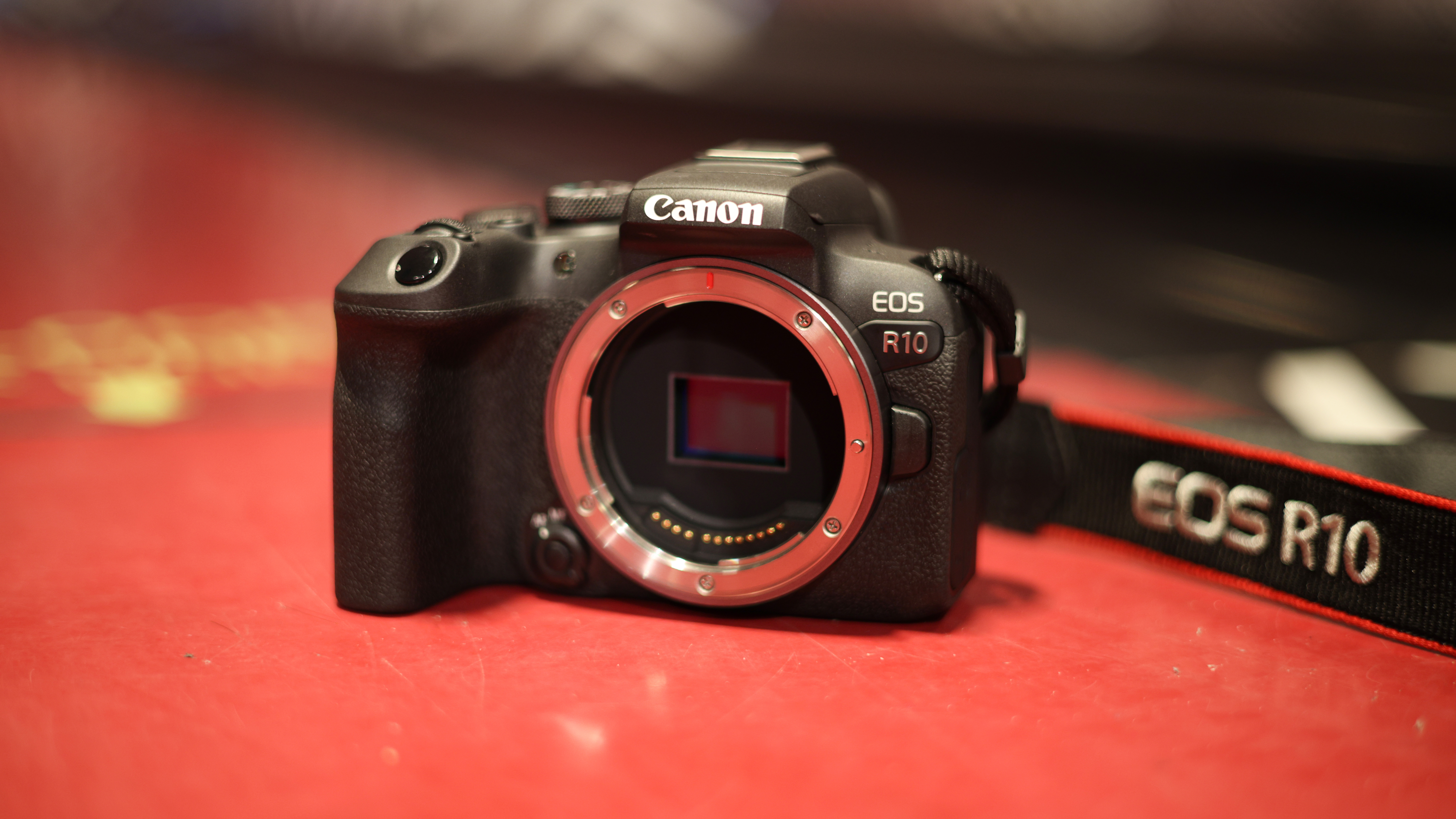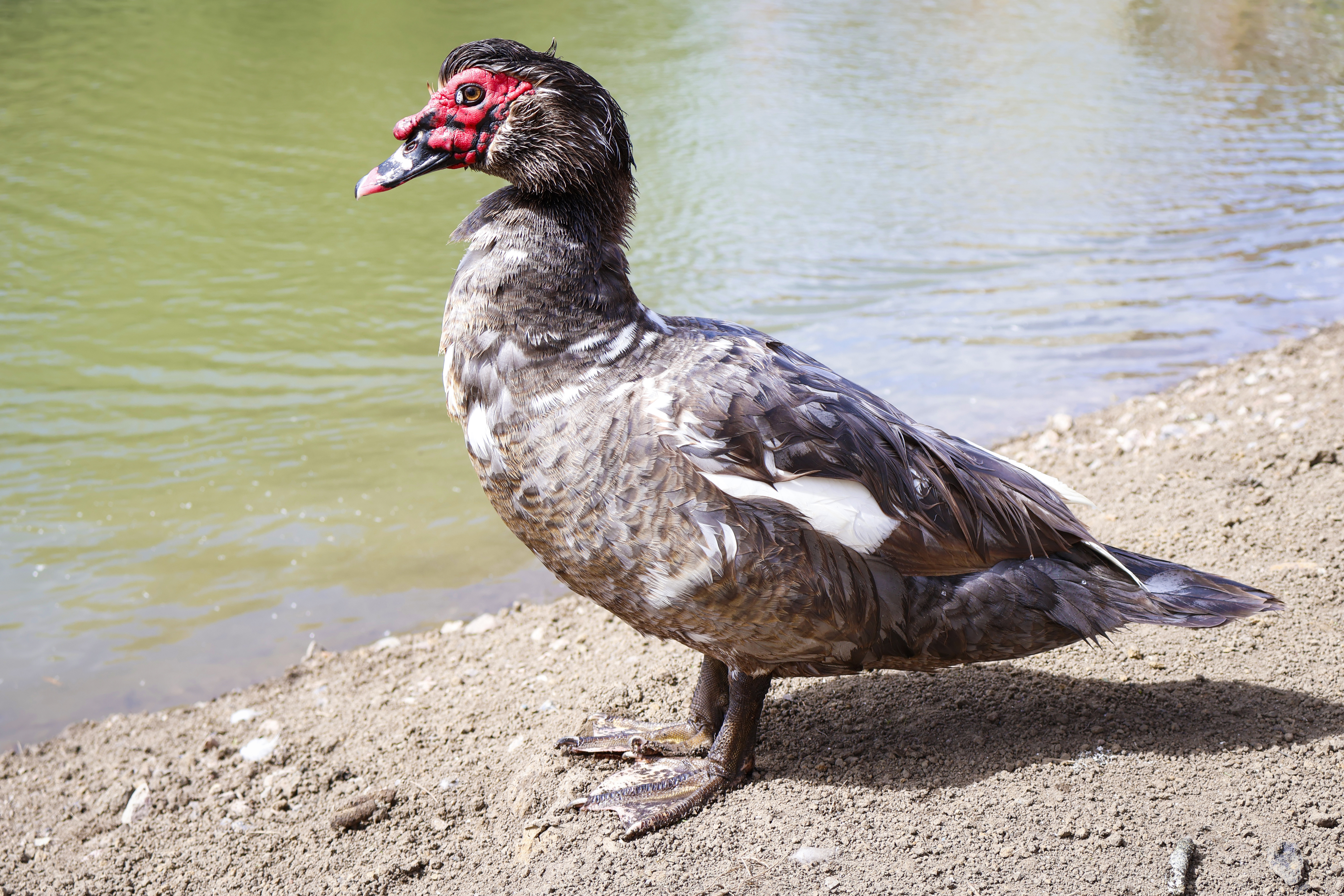Digital Camera World Verdict
The Canon EOS R10 – with professional-level autofocus and speed, 4K 60p imaging and 120p slow-motion at 1080p – offers performance that punches well above its weight class. It seems churlish to bristle at the lack of in-body image stabilization or the crop at 4K 60p, but those are really the only drawbacks to what is a fantastic APS-C body for hybrid shooting.
Pros
- +
Pro-grade autofocus
- +
Pro-grade burst shooting
- +
4K 60p and 1080p 120p
Cons
- -
No in-body stabilization
- -
4K 60p is cropped
- -
No weather sealing
Why you can trust Digital Camera World
Canon never ceases to surprise us, but with the Canon EOS R10 it has truly outdone itself. Here we have a body that’s priced at under a grand in the US and UK, yet it offers shooting speeds that match or exceed those of the top pro sports cameras on the market.
No, we’re not suggesting that the Canon EOS R10 is the best professional camera you can buy. However, it is mechanically faster than the Canon EOS R3 and Sony A1, and it beats the Canon EOS R5 and Canon EOS R6 when shooting both mechanically and electronically.
We weren’t surprised to see an entry level EOS R camera, and we weren’t even surprised to see it in the form of an APS-C body. However, for it to pack this much firepower – making it, sensor size notwithstanding, a faster and higher resolution Canon camera than everything except the R5 and R3 – is quite extraordinary.
This does make for an interesting quandary for new Canon users. Do you get the technologically advanced EOS R10 with a smaller sensor, or the more basic full frame EOS RP for just a little more. See our Canon EOS R10 vs EOS RP comparison for more.
The manufacturer may have been late to the mirrorless dance, and it may have muddled some of the steps between the new APS-C EOS R line and the existing APS-C EOS M line. Now, though, seems to have a clear idea of the road ahead – and the Canon EOS R10 could be the ultimate Trojan horse to get people invested in its mirrorless vision.
• See also: Canon EOS R10 vs EOS RP






Canon EOS R10: Specifications
Sensor: 24.2MP APS-C
Image processor: Digic X
Mount: Canon RF
AF zones: 651 Dual Pixel CMOS AF II divisions
ISO range: 100 to 32,000
Image stabilization: No
Max image size: 6,000 x 4,000
Max video resolution: 4K 60p, 4K 30p (oversampled 6K), 1080p 120p
Viewfinder: 2.36m dot, 120fps
Memory card: 1 x SD/SDHC/SDXC, UHS-II
LCD: Articulating touchscreen, 1.04m dots
Max burst: 23fps electronic, 15fps mechanical
Connectivity: Wi-Fi 2.4Ghz, Bluetooth, USB-C, microphone jack
Size: 122.5 x 87.8 x 83.4mm
Weight: 429g (with battery and memory card)
The best camera deals, reviews, product advice, and unmissable photography news, direct to your inbox!
Canon EOS R10: Key features
Aimed at enthusiasts, travel photographers and lifestyle content creators, the R10 is designed to pack all the features that a photographer could want or need when graduating from a smartphone or DSLR while retaining a light, compact footprint.
Which, in some ways, creates something of an overlap with the EOS M series of cameras… but more on that later.
At the heart of the Canon EOS R10 is a reworked version of Canon’s familiar 24.2MP APS-C image sensor, which has been re-engineered to deliver improved readout speeds – culminating in the lightning-fast 15fps mechanical / 23 fps burst shooting.
In an astonishing move for an entry level camera, the R10 features the same Dual Pixel CMOS AF II found in the high-end R3, R5 and R6 bodies, with full subject tracking for humans, animals and vehicles.
Not only was the latter was previously exclusive to the pro-grade Canon EOS R3, but the camera also features AF case studies and can achieve autofocus down to an impressive -4EV.
The R10 can capture 4K 60p, though this invokes a 64% crop (giving a frame similar to Super 35), and can capture 4K 30p oversampled from 6K, along with 1080p at 120p for slow-motion. Canon claims around 60 minutes of this kind of high-intensity shooting before overheating / recording limits kick in.
Canon EOS R10: Build and handling
The R10 is an incredibly small and lightweight camera, at just 122.5 x 87.8 x 83.4mm and 429g, giving it a feel not unlike the Canon EOS Rebel T8i / 850D. Pair it with the new Canon RF-S 18-45mm f/4.5-6.3 IS STM kit lens or the Canon RF 16mm f/2.8 STM and you've got an ultra lightweight powerhouse.
Obviously it isn't as robust as something like the Canon EOS R7, and doesn't boast any weather sealing, so don't get too cocky with it in extreme environments.
You'll find a joystick on the back of the camera – which is a big addition for a body at this price point – though the Canon control wheel is absent. However, front and rear exposure dials give you full control over your imaging if you want to venture into full manual shooting. And quick-draw one-handed shooters will be happy that the power switch is on the right-hand side, on the rear dial.
The camera also includes a microphone jack, which complements the fully articulating touchscreen to make it vlogging- and video-friendly, and also includes a pop-up flash built into the viewfinder hump.
Canon EOS R10: Performance
The first thing we noticed about the R10 is just how effective the subject tracking and AF is. We've done a lot of shooting with the Canon EOS R5, to the point where we take for granted just how good the market-leading autofocus is (which is, effectively, a cheat code for wildlife photography).
For an entry level camera have an autofocus system this sophisticated… it's just unheard of. This really is pro-level performance at an unbelievable position in the market, and it's a potential game changer for your photography.
That said, while the burst speed is of a pro standard, the buffer capacity (21 RAWs / 123 JPGs) obviously isn't going to rival that of the best professional cameras. That said, while photographing professional ice skaters and skittish wildfowl alike, we were able to capture every frame we wanted – so the performance is definitely not to be underestimated.
While there isn't as much latitude here when pushing the ISO, particularly with slower lenses, there is plenty of pin-sharp detail in the images especially when you treat the sensitivity with respect.
The 4K 60p crop is, in one sense, profoundly unwelcome, rendering your already 1.6x compromised lenses by a further 64% in terms of their focal length – so if you want to shoot wide, you're going to need a very wide lens as it is going to be much effectively longer.
At the same time, though, the same benefit of APS-C cameras to wildlife shooters – the way that the crop factor amplifies focal length – is only further embellished by the 4K crop, meaning that you can artificially extend your reach even further when shooting video. And of course, you can always shoot in 4K 30p to avoid the crop.
Canon has introduced a new line of lenses with the APS-C format in mind: RF-S lenses (taking their name from the EF-S standard, which was the APS-C version of EF-mount glass). However, the Canon EOS R10 uses the same RF mount as its full frame counterparts – which means that existing full frame RF lenses can be used natively, while EF and EF-S lenses can also be used via the Mount Adapter EF-EOS R.
Do note, however, that EF-M lenses (APS-C optics designed for Canon’s other APS-C line, the EOS M system), will not work with the R7, despite them sharing the same sensor format.
Canon EOS R10: Lab results
For our lab data comparison, we compared the EOS R10 to three rival APS-C mirrorless cameras in the same price range: the Fujifilm X-T30 II, Nikon Z50 and Sony a6400. We test resolution using Imatest charts and software, and dynamic range and signal to noise ratio with DxO Analyzer.
Resolution:
All four cameras resolve a similar amount of fine detail, though the 26MP X-T30 II inevitably leads the pack thanks to its higher outright megapixel count. It's a little disappointing that the 24.2MP EOS R10 can't resolve appreciably more detail than the 20.9MP Z 50, and image noise from the Canon actually obscures more detail than it does in the Z50's equivalent shots at high sensitivities.
Dynamic range:
The EOS R10 gets off to a good start, capturing excellent dynamic range at low sensitivities. However, at ISO 800 and beyond it lags behind the competition by as much as 3 stops.
Signal to noise ratio:
This test compares the amount of random noise generated by the camera at different ISO settings as a proportion of the actual image information (the 'signal'). Higher values are better and we expect to see the signal to ratio fall as the ISO is increased.
In this test all four cameras are quite closely matched, though the EOS R10 can't quite match the clarity of images from the Nikon and Fujifilm cameras. It does at least produce images with marginally less noise than those from the a6400.
Canon EOS R10: Verdict
The Canon EOS R10 is a brilliant value proposition, offering some seriously advanced specs in a light, affordable, novice-friendly body. If you know what you're doing with this camera, you can get some very impressive results – and if you have no idea what you're doing, it will help you develop your skills.
It's a fantastic all-purpose camera, with powerful stills specs and impressive video capabilities – though if you want to shoot 4K 60p, this probably isn't going to be an ideal vlogging / presenting camera due to the combination of 1.6x APS-C effect and 64% additional crop.
If you're an existing APS-C mirrorless shooter, you probably want to look to the Canon EOS R7 as it's looking to be the best body on the market right now. If you're stepping up from an APS-C DSLR or smartphone shooter, though, this is a brilliant option to push your creativity and get great results from your photo and video.
Read more:
Canon EOS R7 review
Best Canon cameras
Best Canon RF lenses

James has 25 years experience as a journalist, serving as the head of Digital Camera World for 7 of them. He started working in the photography industry in 2014, product testing and shooting ad campaigns for Olympus, as well as clients like Aston Martin Racing, Elinchrom and L'Oréal. An Olympus / OM System, Canon and Hasselblad shooter, he has a wealth of knowledge on cameras of all makes – and he loves instant cameras, too.










